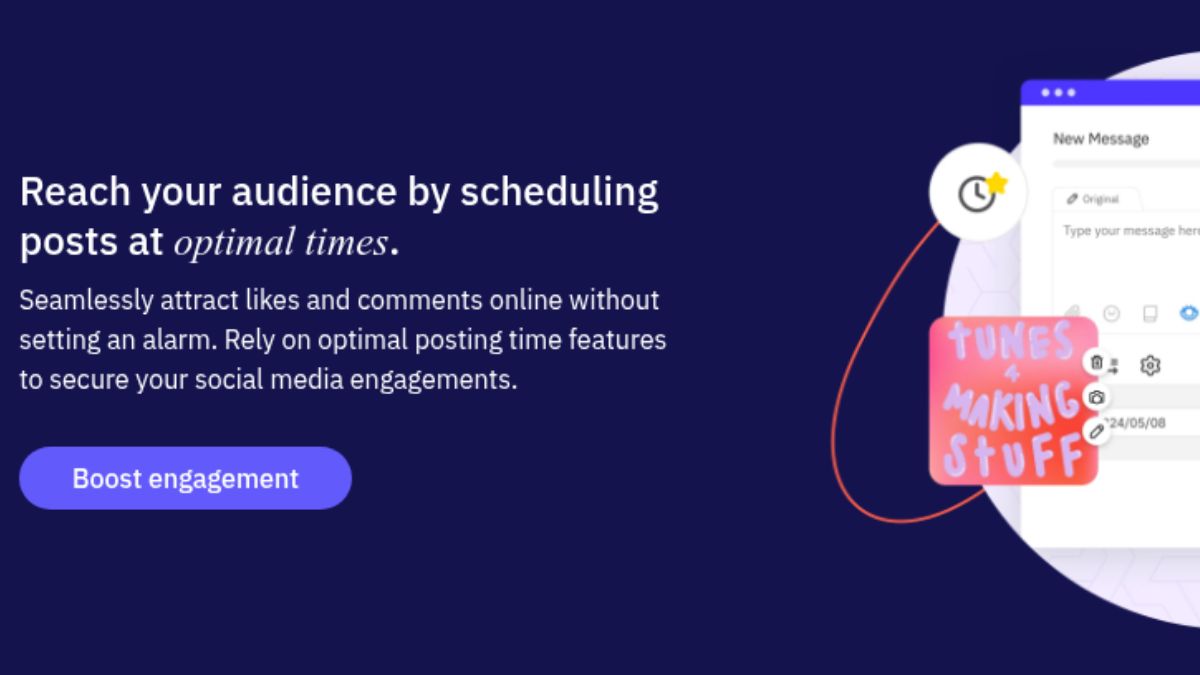DIGITAL MARKETING
The Crucial Role of Vulnerability Assessments in Cybersecurity

The Basics of Vulnerability Assessments
A security breach or a violation of a system’s integrity can have serious repercussions in today’s cyber-centric society, including possible financial loss and harm to one’s image. At the heart of a proactive defense strategy is identifying and managing vulnerabilities. Organizations of all sizes and across all industries increasingly rely on vulnerability assessments to maintain the integrity of their networks and safeguard the data entrusted to them.
A vulnerability assessment is a proactive and comprehensive analysis of an organization’s information systems to uncover potential weaknesses. This systematic process involves identifying, evaluating, and prioritizing vulnerabilities, allowing organizations to address these risks before malicious elements can exploit them. The proactive nature of these assessments protects data and helps organizations build trust with stakeholders, enhancing overall confidence in their systems.
Why are vulnerability assessments necessary?
The grim truth is that the frequency and sophistication of cyber assaults are increasing. High-profile data breaches are becoming unfortunate in the news, underscoring the critical need for rigorous security measures. Vulnerability assessments are pivotal because they allow organizations to identify and rectify system weaknesses preemptively. By systematically identifying security breaches before they occur, vulnerability assessments act as a proactive measure, reducing the risk of catastrophic security incidents.
Statistics from cybersecurity firms consistently show a direct correlation between regular vulnerability assessments and improved security postures. These assessments offer tangible benefits, such as minimizing the risk of exploitation and helping organizations comply with industry regulations and standards. The cost of implementing routine vulnerability assessments is relatively low compared to the potential losses resulting from data breaches, making it a cost-effective investment in security.
How to Conduct a Vulnerability Assessment
- Identify Assets: The first step in assessing vulnerability is determining which assets within an organization are most critical and susceptible to potential threats. This includes hardware, software, and data processes crucial for the business’s daily operations.
- Vulnerability Identification: Employ advanced tools and techniques to detect vulnerabilities within the system. These tools uncover vulnerabilities, including misconfigurations, unpatched software, and other departures from security best practices. These might be automatic scanners or human inspection techniques.
- Risk Analysis: Evaluate the potential impact and the likelihood of vulnerabilities being exploited. This step involves assessing the severity of identified vulnerabilities to prioritize remediation efforts based on the potential risk to the organization.
- Remediation: Develop and implement a comprehensive plan for mitigating risks associated with identified vulnerabilities. It could involve updating software, reconfiguring network settings, or enhancing existing security protocols to close the gaps.
- Report Findings: Document the assessment results, highlighting the vulnerabilities and steps taken to address them. This report serves as a roadmap for ongoing security improvements and a benchmark for future evaluations.
By diligently following these steps, organizations can ensure a thorough vulnerability management process, integral to maintaining robust cybersecurity defenses.
The Role of Automation in Vulnerability Assessments
The integration of automation into vulnerability assessments is transforming the landscape of cybersecurity. Automated tools can scan large and complex networks efficiently, uncovering vulnerabilities at speeds and accuracy unmatched by manual processes. The time saved through automation allows security teams to focus on remediation strategies, thus enhancing the organization’s overall security posture. According to reports featured on CIO, automation improves efficiency and enforces consistency in detecting vulnerabilities, significantly reducing the margin of error.
Automation also plays a critical role in addressing zero-day vulnerabilities, often only detected after an exploit has occurred. By continuously scanning systems, automated tools can help identify anomalies that signify emerging threats, allowing for quicker response times and mitigation efforts. Thanks to this proactive strategy, organizations are guaranteed to be ready for and capable of handling the most recent cyber threats.
Challenges in Conducting Effective Vulnerability Assessments
Despite their benefits, vulnerability assessments are challenging. One primary issue is updating assessment tools and protocols to adapt to new threats and vulnerabilities. Also, managing false positives (incorrect identifications of vulnerabilities) can lead to wasted resources and confusion if not handled appropriately.
As a recent analysis on ZDNet highlighted, ensuring ongoing staff training and awareness about security best practices is also critical. This includes regular updates on emerging threats, best practices for system maintenance, and guidelines for safe online behavior. Addressing these challenges effectively is key to leveraging vulnerability assessments successfully for long-term security benefits.
Best Practices for Vulnerability Management
To maximize the effectiveness of vulnerability assessments, organizations should adhere to a set of best practices that drive ongoing improvements in their security posture. First and foremost, regular assessments are crucial. It ensures that emerging threats are quickly identified and addressed. Additionally, keeping assessment tools and software patches up-to-date minimizes the chances of exploitation.
- Conduct regular assessments to keep pace with evolving cyber threats.
- Update and patch assessment tools frequently to stay ahead of potential vulnerabilities.
Involve cybersecurity professionals for expert analysis and tailored recommendations. Their expertise is crucial in understanding the complex nature of cyber threats and devising effective vulnerability management strategies. Integrate vulnerability management as a core element of the organization’s security strategy. It ensures that vulnerability assessments are not just a one-time activity but a continuous process that aligns with and supports broader security goals. By implementing these best practices, organizations are better positioned to safeguard their assets against an expanding array of cyber threats.
Integrating Vulnerability Assessments with Other Security Measures
Organizations must view vulnerability assessments as part of the bigger picture of cybersecurity strategy. These assessments implement other measures, including threat intelligence and continuous monitoring, to create a robust and resilient security core. By integrating various strategies, organizations can defend against current threats and anticipate future vulnerabilities. This comprehensive approach ensures that cybersecurity practices are not merely reactive but proactive, offering a higher level of protection against the myriad of cyber challenges that today’s digital environment presents.
DIGITAL MARKETING
How to Pick a Reliable Website to Buy Social Media Likes

Engagement is the most important element of social media success, and likes are the most important element in increasing credibility and visibility. Whether you are a business, content creator, or influencer, buying likes can assist in creating social proof and increasing the visibility of your content. But with numerous websites providing social media likes, it is imperative to select a reliable provider to maintain security, authenticity, and long-term gains.
Seek for Authenticity and Real Engagement
The first and the most significant consideration in choosing a site is that it must deliver real likes from genuine users. There are some services that employ bots or fake accounts, which result in artificial engagement without any real worth.
In order to prevent this, go for sites that ensure likes from active and legitimate accounts. You may determine the legitimacy of a service by checking reviews, observing openness in their strategy, and studying sample data from the only site that sells real likes.
Explore Customer Reviews and Reputation
A legitimate site should possess good customer feedback and a superb reputation. Check online reviews, testimonials, and ratings on third-party review sites before buying. Social media groups and discussion forums can also be good predictors of user experiences with different services.
Be cautious of sites with very low customer reviews or no reviews at all. A company with good customer testimonials and a track record of successful customers is in a better position to provide quality engagement and protect your social media account from potential risks.
Look for Privacy Policies and Secure Payment Options
Security is a concern when purchasing social media likes since you may be prompted to provide payment details or account credentials. A good site should offer secure payment options, such as credit card processing that uses encryption. Avoid using sites that ask for your social media password since they will most likely be scams or lead to account hacking.
Also, look at the privacy policy of the website to ensure that your data will not be made accessible to third parties. Good services respect customers’ privacy and clearly state their terms of service.
Assess Delivery Speed, Packages, and Pricing
Though cost is significant, very cheap services are probably signs of low-quality interaction or likes generated by bots. Evaluate several providers and compare their prices relative to the value they bring. Trusted websites will give you clear-cut pricing and options for several package deals so that you can select what suits your requirements best.
Be careful of the speed of delivery too—likes that appear too suddenly tend to look fabricated and get flags on social media sites. Organic, slow-built likes are always better as it keeps your reputation intact and also prevents algorithm punishment.
Check Customer Support and Refund Policies
A good site should have great customer support and a reasonable refund policy. Check for services that offer support via email support, live chat, or a separate help center. If a site has unclear contact information or is slow to respond to questions, it might not be reliable.
Also, check if they have a money-back guarantee in case of low-quality likes or failed services. Platforms that value quality service will have open policies and responsive customer care to guarantee customer satisfaction.
Choosing the only site that sells real likes can help boost engagement, but it’s important to invest in reputable companies that prioritize real likes, gradual delivery, and account security. When done correctly, purchasing likes can be a valuable part of your social media growth strategy, enhancing your online presence and credibility.
DIGITAL MARKETING
How Custom Internal Tools Can Improve Team Collaboration and Productivity

What Are Custom Internal Tools?
Custom internal tools are software solutions designed to meet a company or organization’s unique needs. Unlike off-the-shelf software, these tools are tailored to optimize team workflows and improve efficiency. By addressing a business’s specific challenges, custom tools help streamline processes, reduce time spent on repetitive tasks, and enhance collaboration across departments. Whether for project management, communication, or data processing, custom tools enable teams to focus on their core responsibilities and deliver better results.
With the right custom tools, teams can automate manual tasks and create more seamless workflows. For example, Pythagora offers customizable automation solutions that allow businesses to enhance their development and testing processes. These tailored tools help employees save time, improve productivity, and ensure smoother collaboration. Integrating customized tools into daily activities can help organizations create a more productive and efficient workplace, resulting in improved decision-making and quicker problem-resolution.
Benefits for Team Collaboration
The implementation of custom internal tools significantly enhances team collaboration by breaking down silos within an organization. These tools centralize information and provide a unified platform for team interaction, essential in facilitating smooth communication. Companies that improve their communication strategies see a substantial increase in productivity—up to 25%. Custom tools eliminate the confusion and redundancy that often arise from fragmented communication channels by offering a centralized location for sharing resources, managing tasks, and tracking project progress. This centralized approach streamlines operations and fosters a collaborative atmosphere where team members feel more connected and aligned toward common goals, ultimately driving higher innovation and productivity.
Enhancing Productivity
Tailored internal tools enhance productivity by streamlining regular tasks and allowing employees to concentrate on more important work. These tools’ capacity to optimize processes is unmatched, as they decrease redundancies and cut down the time spent on repetitive tasks. Employing automation through custom software can yield up to a 20% improvement in operational efficiency. This is significant when considering the competitive landscape, as businesses seek to optimize resources and increase output. By providing solutions tailored to business needs, companies can streamline decision-making processes and act quickly on emerging opportunities, thus minimizing bottlenecks. Employees benefit from a more efficient workflow, which maximizes productivity and enhances job satisfaction as they engage in meaningful, impactful work.
Designing Effective Tools
Designing practical internal tools requires a strategic approach based on user engagement and analysis. Using firsthand experiences from end-users, conducting interviews, surveys, and direct observation can help identify pain points, workflow inefficiencies, and feature preferences. Constructive feedback at multiple stages of the development process ensures the tools are user-friendly and aligned with actual work practices.
Semi-simple integration with existing systems is crucial to avoid operational disruptions and ensure high user adoption rates. It is essential to work closely with IT departments to understand technical constraints and test interoperability with various software environments.
Continuous iteration and rigorous testing should be standard practice, incorporating agile methodologies for frequent updates based on user feedback and evolving requirements. Rigorous testing phases, including unit testing, system testing, and user acceptance testing (UAT), should be implemented to identify bugs and ensure reliability.
Adopting analytics and performance metrics post-deployment can guide future enhancements and facilitate a proactive approach to addressing any issues. This dedication to flexibility guarantees that the tools stay pertinent despite technological progress and prepares organizations to react efficiently to changing business landscapes.
Considerations and Challenges
Despite their advantages, custom internal tools have challenges that require careful consideration. The initial investment for developing bespoke solutions can be higher than purchasing ready-made software, and it often necessitates navigating a learning curve for employees. Strong training initiatives ensure a seamless transition and promote widespread acceptance. Additionally, data security is a critical factor; organizations must implement thorough strategies to safeguard sensitive data, ensuring that tools are protected from breaches and unauthorized access. While these challenges are present, effectively tackling them can lead to successful execution and enduring advantages.
DIGITAL MARKETING
From Viral to Valuable: Creating Impactful Social Media Marketing Campaigns

In today’s digital-first world, social media marketing has become a cornerstone of brand growth and customer engagement. While going viral might seem like the ultimate goal, the true measure of success lies in creating campaigns that deliver long-term value. This article explores how businesses can transition from chasing viral moments to building impactful, value-driven social media marketing campaigns that resonate with audiences and drive meaningful results.
The Allure of Viral Social Media Marketing
The idea of going viral is undeniably appealing. A single post, video, or hashtag can catapult a brand into the spotlight, generating millions of views, shares, and likes overnight. Viral campaigns often create a sense of instant success, but they come with a caveat: virality is fleeting.
While viral moments can boost visibility, they don’t always translate into sustained engagement or conversions. For example, a funny meme might get shared widely, but if it doesn’t align with your brand’s core message or target audience, it may fail to drive meaningful results. This is where the shift from viral to valuable becomes crucial.
What Makes a Social Media Marketing Campaign Valuable?
A valuable social media marketing campaign goes beyond likes and shares. It focuses on creating meaningful connections with your audience, driving actionable outcomes, and aligning with your brand’s long-term goals. Here are the key elements of a valuable campaign:
- Audience-Centric Content
Understanding your audience is the foundation of any successful social media marketing strategy. Valuable campaigns are tailored to the needs, preferences, and pain points of your target demographic. Use analytics tools to gather insights about your audience’s behavior, interests, and engagement patterns. - Clear Objectives
Every campaign should have a defined purpose. Whether it’s increasing brand awareness, driving website traffic, or boosting sales, your goals should guide your content creation and distribution strategy. - Authenticity and Storytelling
Audiences crave authenticity. Share stories that reflect your brand’s values, mission, and personality. Authentic storytelling fosters trust and emotional connections, making your campaigns more memorable and impactful. - Consistency
Consistency in tone, style, and posting frequency helps build brand recognition and loyalty. A valuable campaign isn’t a one-off effort; it’s part of a cohesive social media marketing strategy. - Measurable Results
A valuable campaign is one that delivers measurable outcomes. Use metrics like engagement rates, click-through rates, and conversion rates to evaluate the success of your efforts and make data-driven improvements.
Steps to Create Impactful Social Media Marketing Campaigns
1. Define Your Goals and KPIs
Before launching a campaign, clarify what you want to achieve. Are you looking to increase followers, generate leads, or promote a new product? Set specific, measurable goals and identify key performance indicators (KPIs) to track your progress.
2. Know Your Audience
Conduct thorough research to understand your audience’s demographics, interests, and online behavior. Use this information to create content that resonates with them. Tools like Facebook Insights, Instagram Analytics, and Google Analytics can provide valuable data.
3. Craft Compelling Content
Content is the heart of any social media marketing campaign. Focus on creating high-quality, visually appealing, and engaging content that aligns with your brand’s voice. Experiment with different formats, such as videos, infographics, polls, and user-generated content, to keep your audience engaged.
4. Leverage Storytelling
Stories have the power to evoke emotions and drive action. Share behind-the-scenes glimpses, customer success stories, or narratives that highlight your brand’s mission. For example, Dove’s “Real Beauty” campaign used storytelling to challenge beauty stereotypes, creating a lasting impact.
5. Engage with Your Audience
Social media is a two-way street. Respond to comments, messages, and mentions to foster a sense of community. Encourage user-generated content by running contests or asking followers to share their experiences with your brand.
6. Collaborate with Influencers
Influencer partnerships can amplify your reach and credibility. Choose influencers whose values align with your brand and whose followers match your target audience. Micro-influencers, in particular, often have highly engaged audiences and can deliver strong results.
7. Optimize for Each Platform
Different social media platforms have unique features and audience expectations. Tailor your content to suit each platform. For example, Instagram favors visually-driven content, while LinkedIn is ideal for professional and thought-leadership posts.
8. Monitor and Adjust
Track your campaign’s performance using analytics tools. Identify what’s working and what’s not, and make adjustments accordingly. A/B testing can help you refine your approach and maximize your results.
Examples of Valuable Social Media Marketing Campaigns
- Nike’s “Just Do It” Campaign
Nike’s campaign is a prime example of value-driven social media marketing. By focusing on empowerment and inclusivity, Nike has created a lasting connection with its audience, transcending the pursuit of virality. - Starbucks’ #RedCupContest
Starbucks’ annual holiday campaign encourages customers to share photos of their red cups for a chance to win prizes. This user-generated content strategy not only boosts engagement but also creates a sense of community around the brand. - Airbnb’s #WeAccept Campaign
Airbnb’s campaign promoting diversity and acceptance resonated deeply with its audience. By aligning with a social cause, Airbnb demonstrated its values and strengthened its brand identity.
The Long-Term Impact of Valuable Campaigns
While viral moments can provide a temporary boost, valuable social media marketing campaigns deliver long-term benefits. They build brand loyalty, foster customer relationships, and drive sustainable growth. By focusing on creating meaningful content and engaging with your audience authentically, you can turn fleeting attention into lasting impact.
Conclusion
In the ever-evolving landscape of social media marketing, the shift from viral to valuable is essential for long-term success. By prioritizing audience-centric content, clear objectives, and measurable results, businesses can create campaigns that not only capture attention but also drive meaningful outcomes. Remember, the true power of social media marketing lies in its ability to build connections, inspire action, and deliver value—one post at a time.
-

 BLOG1 year ago
BLOG1 year agoATFBooru: A Hub for Animated Art and Community
-

 CONSTRUCTION1 year ago
CONSTRUCTION1 year agoBuilding a Home Gym in Your Basement (7 Key Renovation Tips)
-

 BLOG1 year ago
BLOG1 year agoFictionmania: A Deep Dive into the World of Transformative Stories
-

 GAMES1 year ago
GAMES1 year agoSnow Rider 3D: Unblocked Tips and Tricks for Gamers
-

 BLOG12 months ago
BLOG12 months agoGIFHQ: A Comprehensive Guide
-

 BLOG1 year ago
BLOG1 year agoVincent herbert new wife: A Detailed Overview
-

 BUSINESS1 year ago
BUSINESS1 year agoInvestiit.com Tips: A Comprehensive Guide for Smart Investing
-

 LIFESTYLE12 months ago
LIFESTYLE12 months agoAchieve Elegance with Chic Blue Formal Dresses and Redken Professional Hair Care for All Hair Types
